















|
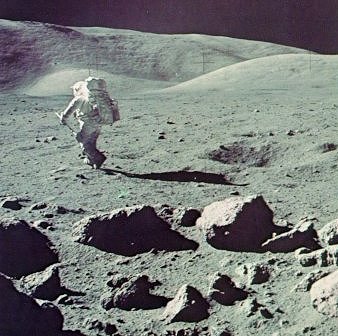
|
| Sampling scoop in hand, I go questing at Station 5 by Camelot Crater. At this point I had already collected a load of samples, and will shortly curve back to the Rover, off-camera at left, to unload. This was our second EVA, covering some 11 miles. |
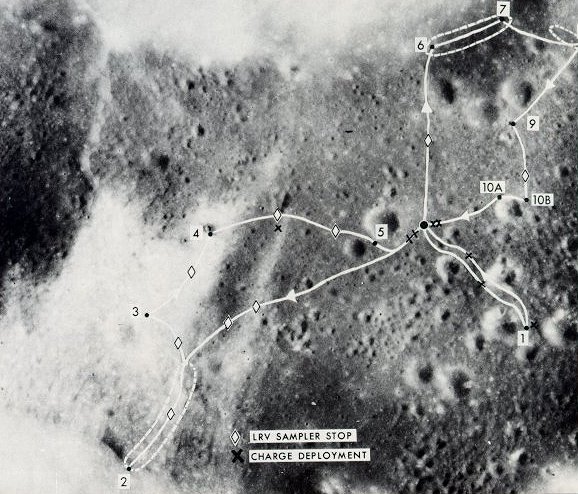
|
| Our three traverses on Apollo 17 came very close to those we had preplanned, differing only because of unexpected findings. The fist run was a mile and a quarter to Steno Crater and back, in the 4 o'clock position above. The second was the longest, at 5 o'clock. At station 4 near Shorty Crater we found the orange soil (see here). The third run, at 12 to 1 o'clock, was more than six miles. The great fractured boulder shown here is on the slope near Station 6. |
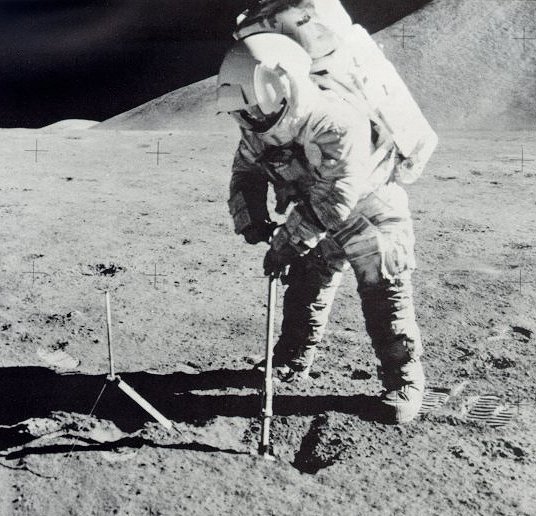
|
| Sampling by scoop was the main way we obtained the large numbers of small samples that provide good statistical information about the composition of the surface. That instrument to the left of Apollo 15's Jim Irwin is a gnomon. It provides a vertical-seeking rod of known length, a color chart, and a shadow - all useful for calibrating pictures. |
 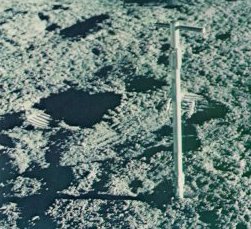
|
| Sampling tongs and coring tubes gave us other means of collecting special samples. The spring-loaded tongs below let us pick up small rocks and fragments without getting down on our knees or otherwise reaching way down with clumsy gloves. The core tubes were hammered down into the soil and then drawn back out and capped. They gave us a way to collect sections of soil that preserved the relative relationships undisturbed. |
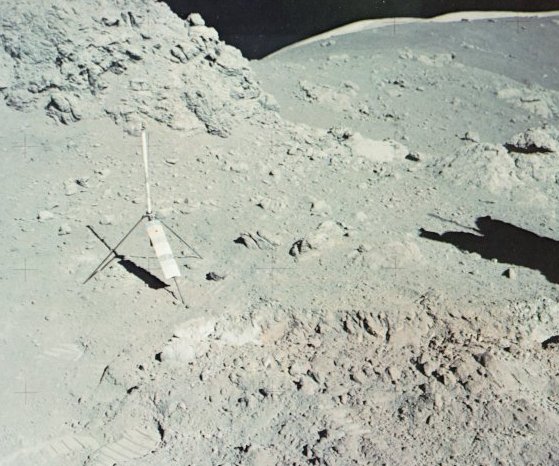
|
| Finding orange soil near Station 4 on Apollo 17 at the time when oxygen was running low kept us on the jump. We dug a trench 8 inches deep and 35 inches long, took samples of the orange soil and nearby gray soil, drove a core tube into the deposit, sampled surrounding rocks, described and photographed the crater site in detail, and packed the samples - all in 35 minutes. The effort gave scientists a most unusual sample: very small beads of orange volcanic glass, formed in a great eruption of fire fountains over 3.5 billion years ago. |
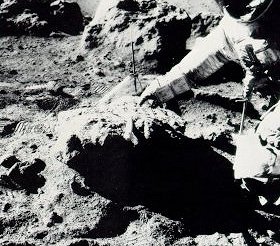
| Rocks too big to bring back were studied where they were, described and photographed, and sampled by chipping pieces from their corners. If we could roll the rock over, as above, we could take soil samples underneath that had been shielded from the effects of solar and cosmic radiation. |
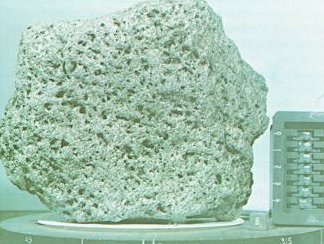
| The basaltic lavas of the lunar maria, like this sample photographed after return to a laboratory on Earth, tell much about the partial melting of the Moon between three and four billion years ago. This sample, 70017, is identified in its documentation photograph by the number of the counter and by the B orientation code. |
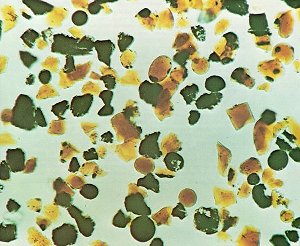
| Ancient beads of orange volcanic glass in the photomicrograph above have revealed secrets of the Moon's deep interior. Produced most likely by the partial melting of the lunar mantle, and discovered by Apollo 17, these beads are unusualy rich in such volatile elements as lead, zinc, tellurium, and sulfur. This indicates not only volcanic origin but also derivation from rocks possibly as deep as 200 miles in the Moon. Similar glass beads, green in color, were discovered by Apollo 15. |


